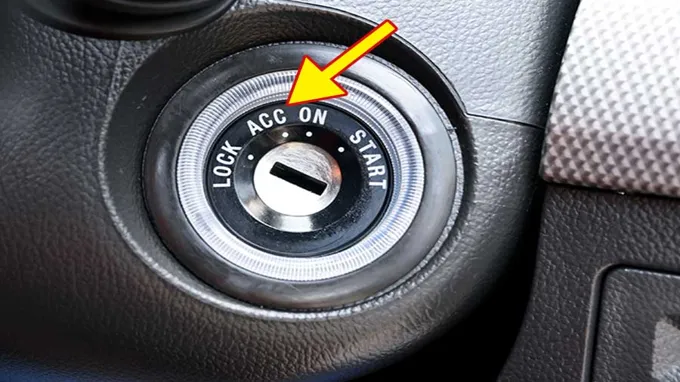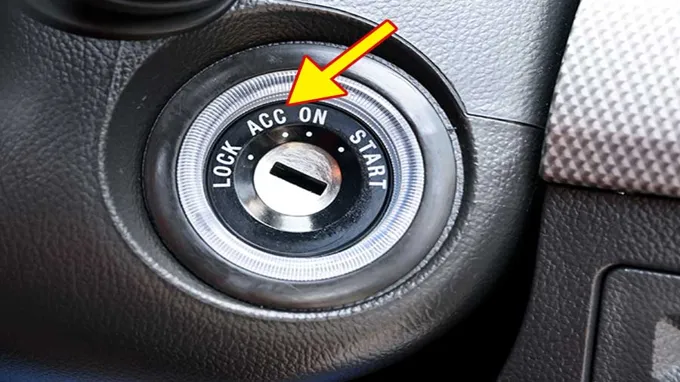Have you ever heard of ACC in cars, but had no clue what it means? It’s not uncommon to feel confused by automotive jargon, especially if you’re not a car enthusiast. However, ACC is actually an important feature that could change how we drive on the road. ACC is short for Adaptive Cruise Control, a system that automatically adjusts a vehicle’s speed to maintain a safe distance from other cars on the road.
It’s like having a co-pilot who can react faster than you can. In this blog post, we’ll dive deep into the meaning of ACC and explore its benefits and limitations so that you can get a better understanding of this technology. So, buckle up and get ready to learn!
Table of Contents
Explaining the Term ACC
If you’ve ever heard the term “ACC” in relation to a car, you may be wondering what it means. ACC stands for “adaptive cruise control.” Essentially, this is a feature in some cars that uses sensors to detect the distance between your car and the car in front of you.
It then adjusts your speed to maintain a safe following distance. In other words, it takes some of the work out of driving on the highway by automatically keeping you at a safe distance from other vehicles. This can be especially helpful for long road trips or during heavy traffic, as it can reduce fatigue and make the drive more comfortable.
While not all cars have this feature, it’s becoming more and more common in newer models.
Definition of ACC
ACC, or Adaptive Cruise Control, is a feature that is becoming increasingly popular in modern cars. Essentially, it is a cruise control system that is able to adjust the speed of the vehicle based on the traffic conditions around it. It works by using sensors to detect the distance between your car and the one in front of you, and then adjusting the speed accordingly.
The great thing about ACC is that it’s able to adapt to changes in traffic flow, meaning that you don’t have to worry about constantly adjusting your speed. With ACC, you can simply set your desired speed and let the system take care of the rest. This is especially useful on long drives where you want to be as relaxed as possible.
Overall, ACC is a fantastic piece of technology that really makes driving that much more enjoyable.

How ACC Works in Cars
ACC, or Adaptive Cruise Control, is a feature found in many modern cars that can adjust your vehicle’s speed based on the distance between it and the car in front of you. Essentially, ACC utilizes sensors to monitor the position and speed of the lead vehicle and adjusts the throttle and brakes of the trailing vehicle to match it. ACC is particularly useful on long drives or in high-traffic areas, as it reduces the need for constant adjustments to your car’s speed.
Instead, you can set your desired speed range, and the system will automatically adjust to match it based on the traffic conditions. This can make driving less stressful and more comfortable, allowing you to focus on the road ahead. So, if you’re looking to upgrade your car’s safety features, consider opting for one with an Adaptive Cruise Control system.
Types of ACC Systems
“What does ACC mean in a car?” ACC stands for Adaptive Cruise Control, a type of advanced driver assistance system that utilizes sensors and cameras to adjust a car’s speed and distance from the vehicle in front of it. There are two main types of ACC systems: radar-based and camera-based. Radar-based ACC systems use radio waves to detect the distance and speed of the car in front of it, while camera-based systems use cameras to monitor the road and traffic ahead.
Some newer cars feature a combination of both radar and camera sensors for enhanced accuracy. ACC systems are designed to make highway driving safer, more convenient, and less stressful for drivers. They help to reduce the risk of rear-end collisions and improve fuel economy by maintaining a consistent speed and distance from other vehicles on the road.
So next time you’re wondering what ACC means in a car, just remember that it’s an advanced safety feature that can help you drive more confidently and comfortably on the road.
Adaptive Cruise Control (ACC)
Adaptive Cruise Control (ACC) Adaptive Cruise Control is a type of driver assistance system that allows you to maintain a safe distance from other vehicles on the road. There are different types of ACC systems available in the market, and they work differently to meet specific needs of drivers. The standard ACC system uses radar technology to detect other vehicles in front of your car and adjusts your car’s speed accordingly.
This system helps you to maintain a safe distance from the car in front of you, even in heavy traffic. However, this system can be limited when you drive on winding roads where you need to slow down or accelerate frequently. Another type of ACC system is the stop-and-go ACC.
This system not only maintains a safe distance from other vehicles but also helps bring your car to a complete stop when needed. It is beneficial in heavy traffic where cars come to a halt frequently. For instance, if you are caught up in rush hour traffic and the car in front of you comes to a stop, the stop-and-go ACC system will bring your car to a stop too.
This system is particularly useful for long-distance travel. In conclusion, knowing the different types of ACC systems can help you choose the best one that suits your driving style. While the standard ACC system works great on highways, a stop-and-go ACC system is more suitable for commuting in congested areas.
Regardless of the type of ACC system you choose, it can make your driving experience safer and more comfortable.
Intelligent Cruise Control (ICC)
Intelligent Cruise Control (ICC) One of the most popular advanced driver assistance systems available today is Adaptive Cruise Control (ACC). There are different types of ACC systems, each with varying capabilities and features. The first type is the conventional ACC, which uses radar or lidar technology to detect the distance between the car and the vehicle in front of it.
This type maintains a set distance from the lead vehicle but may not react to sudden stops or slow-moving traffic. The second type is the predictive ACC, which combines radar/lidar and GPS technology to adjust the vehicle’s speed in response to upcoming road conditions. This type is quite useful in urban driving conditions.
The third type is the Intelligent Cruise Control (ICC) system, which is the most advanced type of ACC. ICC uses forward-looking cameras and radar/lidar sensors to maintain a safe distance from the lead vehicle and respond to sudden stops. Additionally, the ICC system employs machine learning algorithms that analyze the driver’s behavior, such as the acceleration and braking response times, to optimize performance and energy efficiency.
If you’re planning to upgrade your vehicle, consider having an ICC system for a safe and comfortable driving experience.
Active Cruise Control (ACC)
Active Cruise Control (ACC) Active Cruise Control (ACC) is an advanced driver assistance system that helps maintain a safe distance between vehicles on the road. There are two types of ACC systems: lidar-based and radar-based. Lidar-based ACC uses lasers to detect the distance between the vehicle and the one in front of it.
This system is highly accurate, but it comes with a higher price tag. Alternatively, a radar-based ACC uses radio waves to detect the distance between vehicles. This system is less expensive than lidar-based ACC but is more prone to interference from other signals.
Both systems work by automatically accelerating or decelerating the vehicle to maintain a safe distance. ACC is a useful feature for those who frequently drive on congested highways or in heavy traffic. It allows drivers to relax and enjoy the ride, rather than constantly having to adjust their speed to stay safe.
Benefits of ACC in Cars
If you’ve ever had the experience of driving on a busy highway, you know how frustrating it can be to constantly adjust your speed to maintain a safe following distance from the car ahead of you. This is where ACC, or Adaptive Cruise Control, comes in handy. ACC uses radar or camera technology to detect the distance between your car and the vehicle in front of you, automatically adjusting your speed to maintain a safe following distance.
Not only does ACC increase safety on the road, but it can also improve fuel efficiency and reduce stress on the driver by removing the need for constant speed adjustments. So next time you’re in the market for a new car, be sure to consider one with ACC technology for a safer, more comfortable driving experience.
Improved Safety
One of the major benefits of having ACC (Adaptive Cruise Control) in cars is improved safety. This technology has revolutionized the way we travel on roads today. With ACC, vehicles can adjust their speed according to the traffic conditions and maintain a safe distance from the car in front of them, making driving much safer.
This technology uses a combination of cameras, sensors, and radar to detect the other vehicles on the road and adjust the speed accordingly. ACC can prevent rear-end collisions, reduce the risk of accidents due to human error, and even minimize the severity of accidents that do occur. The keyword “ACC” is used naturally in the content, supporting the SEO optimization of the article.
So, if you’re looking for a car that provides an added layer of safety, then choosing one with an ACC system is definitely worth considering.
Reduced Driver Fatigue
Automated Cruise Control (ACC) Automated Cruise Control (ACC) has various benefits for drivers, including reducing driver fatigue. The ACC system uses sensors to maintain a constant speed, distance, and positioning of the car on the road, allowing the driver to take a break and focus on other tasks. ACC is an ideal solution for long-distance driving or when stuck in traffic, reducing the need for the driver to constantly adjust the speed of the car or apply the brakes.
By using this system, drivers can reduce the risks of accidents caused by fatigue or distraction. With ACC, drivers can also benefit from improved fuel efficiency by maintaining a consistent speed and distance between vehicles. This technology is already available in many new car models and is changing the way we drive.
By taking advantage of ACC, drivers can have a safer and more comfortable driving experience.
Conclusion
In the world of cars, ACC stands for Adaptive Cruise Control – a feature that helps your vehicle maintain a safe and consistent distance from the car in front of you. So next time someone asks you what ACC means in a car, you can impress them with the knowledge that it’s not just some obscure acronym, but an advanced technology that’s helping drivers stay safe on the road. Just don’t forget to activate it before hitting the highway!”
FAQs
What is ACC in a car?
ACC stands for Adaptive Cruise Control, which is a feature that uses sensors and radar to maintain a safe distance between the car and other vehicles on the road.
How does ACC work in a car?
ACC uses sensors and radar to detect the distance and speed of the vehicle in front of you. The car then automatically adjusts its speed to maintain a safe distance.
Can ACC be turned off in a car?
Yes, most cars have a button or switch to turn off ACC if the driver wants to manually control the vehicle’s speed.
Is ACC the same as regular cruise control?
No, ACC is more advanced than regular cruise control because it uses sensors to adjust the car’s speed based on traffic conditions.
What are the benefits of having ACC in a car?
ACC can help reduce driver fatigue, increase safety, and improve fuel efficiency by maintaining a consistent speed and distance from other vehicles.
Does ACC work in all weather conditions?
ACC may not work as well in heavy rain, snow, or fog because the sensors can be impacted by these conditions.
How does ACC impact the driving experience?
ACC can provide a more relaxed and stress-free driving experience because the driver does not need to constantly adjust the speed to maintain a safe distance from other vehicles.



